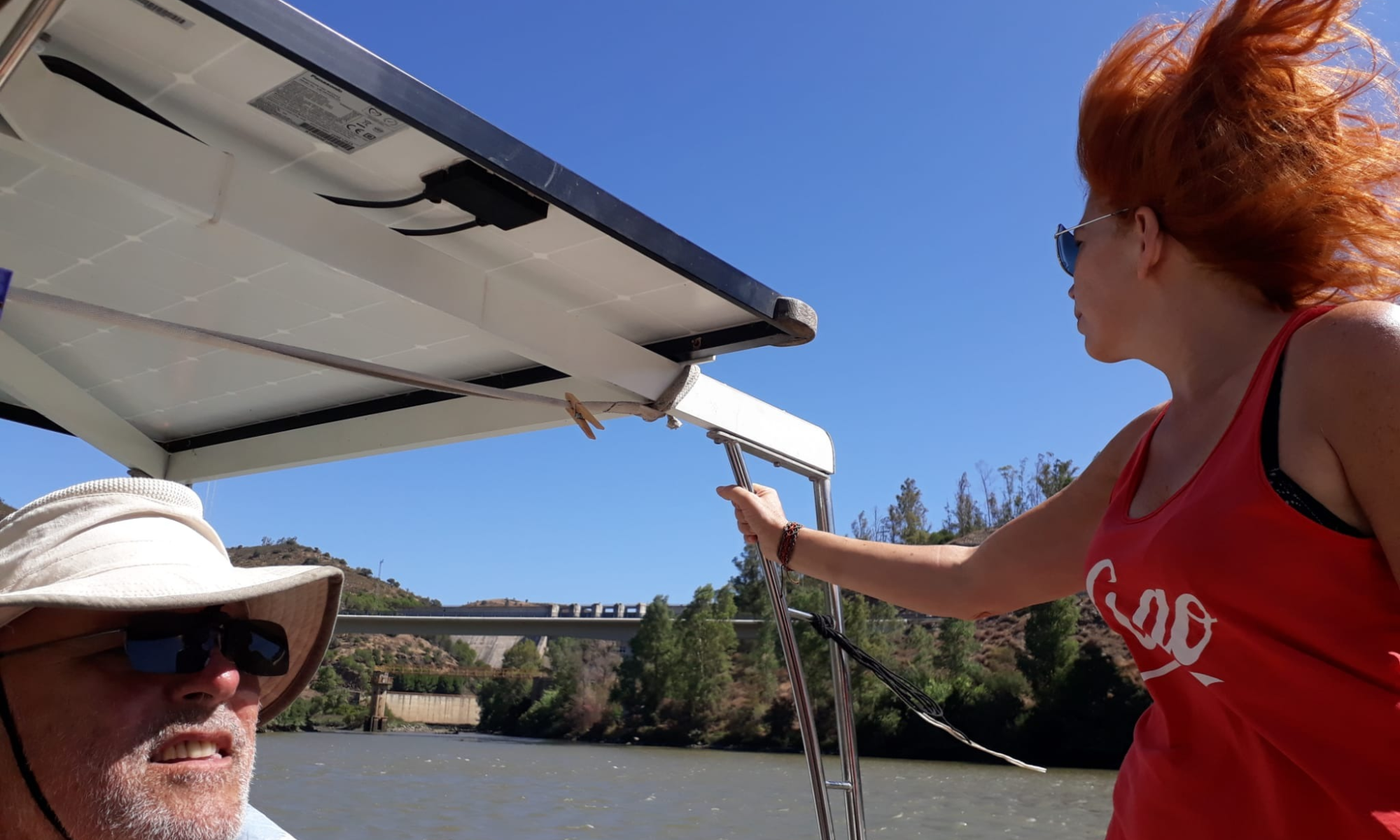Sailing to Pomarao on Rio Guadiana, we passed a huge hydropower dam on the Rio Chanca.

We also passed this hydropower dam on our way to Pulo do Lobo.
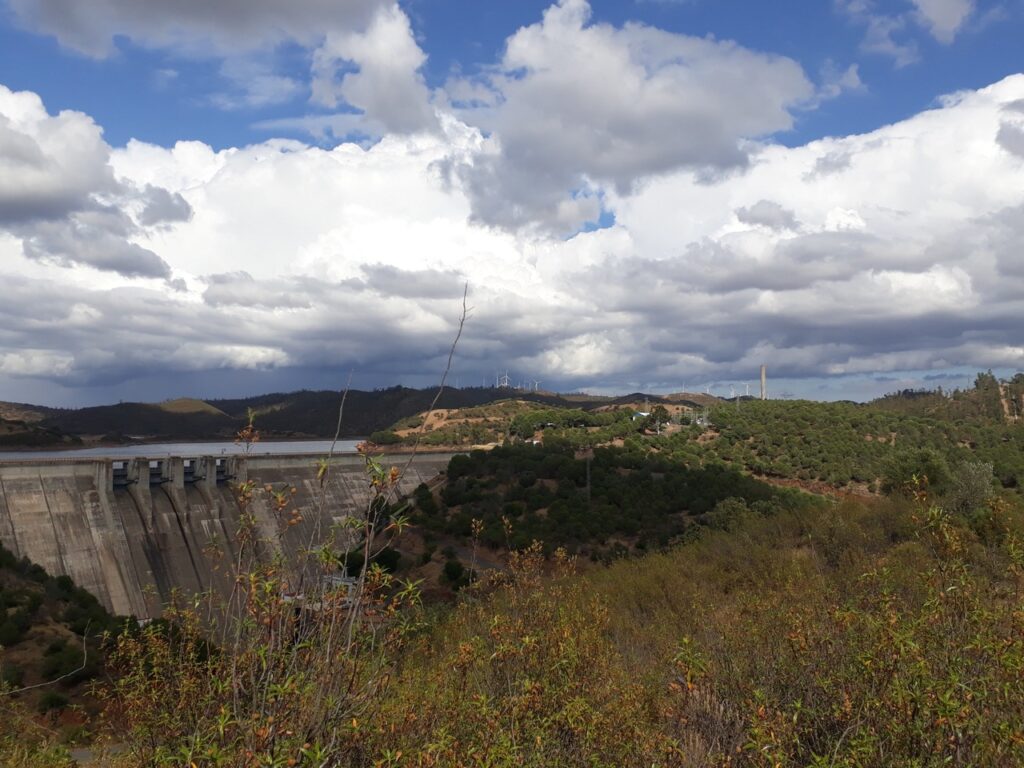
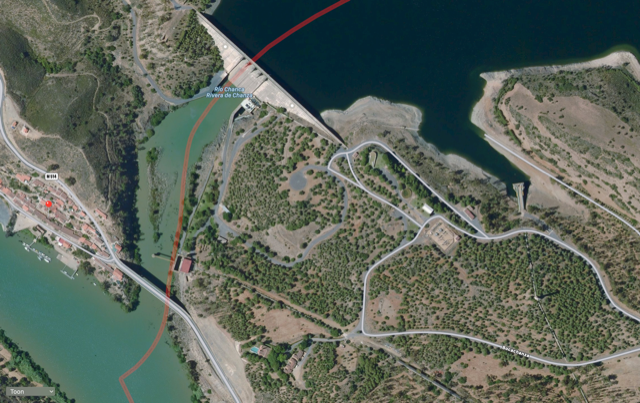
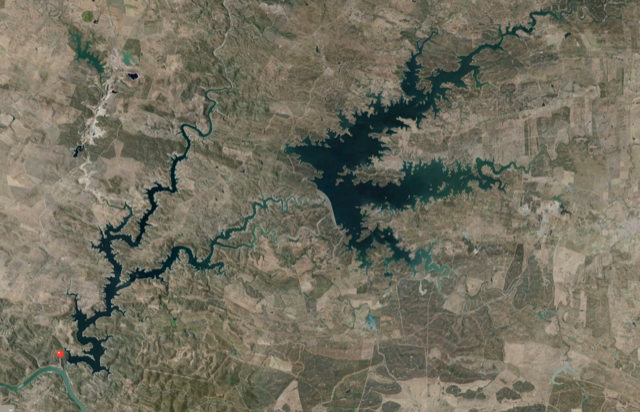
The Alqueva Dam was completed in 2002. The dam creates a large reservoir from which the water runs throughout the region. Its’ strategic water reserve has sufficient capacity to last at least three successive years of drought. Also, it enabled the introduction of 120,000 hectares (300,000 acres) of new irrigated crops in the Alentejo region. Finally, it was also aimed at improving the employment situation in the region (for example in tourism).
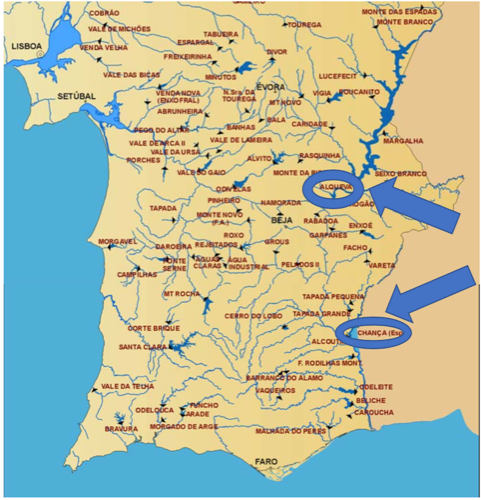
The Alqueva Dam is the largest dam and artificial lake (250 square kilometres) in Western Europe.[2] Unfortunately, the dam also caused side effects, such as the loss of prehistoric engravings and habitat of rare and endangered species including eagles, kites, wild boars, and the Iberian lynx. A Roman fort was submerged.[4] Also there are doubts on the efficiency of the irrigation project, like we saw at rio Mondego.
The dams greatly contribute to Portugal’s renewable energy sources (between 13 and 28%). Renewables account for 72 percent of Portugal’s consumption in the first 5 months of 2021. Thanks to these efforts, Portugal drastically brought down the number of coal fueled power stations and greenhouse-emissions.

